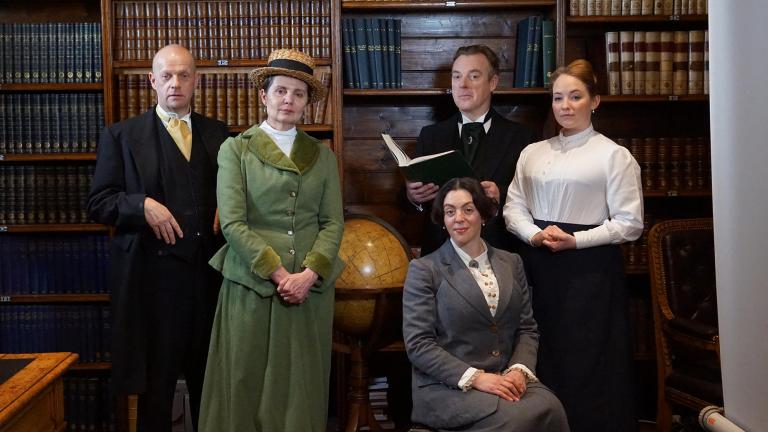 RAS
RASWomen at the RAS once again
The sometimes stately proceedings of the Royal Astronomical Society Ordinary (A&G) Meeting were enlivened by a performance from the Time Will Tell theatre company on 8 January this year.
 RAS
RASThe sometimes stately proceedings of the Royal Astronomical Society Ordinary (A&G) Meeting were enlivened by a performance from the Time Will Tell theatre company on 8 January this year.


Old meets new at the RAS Ordinary (A&G) Meeting on 8 January 2016.
The sometimes stately proceedings of the Royal Astronomical Society Ordinary (A&G) Meeting were enlivened by a performance from the Time Will Tell theatre company on 8 January this year.
The occasion was the centenary of women becoming Fellows of the RAS; the play, The Way to the Stars, marked the event and the long-drawn out changes that preceeded it.
On 14 January 1916 – 100 years ago – the Royal Astronomical Society first elected women as Fellows. This was a step forward for the Society and it came some 30 years after women first tried to join. The five women elected in January 1916 were notable in the same way as the men elected at the same time, that is, some were scientists whose work is know today, such as Mary Adela Blagg; others have been largely forgotten. We know very little about Irene Warner for example.
We’re celebrating this anniversary in A&G throughout 2016 with a series of articles examining the many and varied contributions to the work of the RAS made by women, from the Honorary members recognised before 1916 to some of the outstanding scientists of the twentieth century, but focusing on the characters and situations of the first Fellows, as a snapshot of what women were doing in astronomy a century ago. While the costumes and speech of 100 years ago seemed different, the sentiments and aspirations of these scientists rang a very modern bell, and fitted in well alongside the presentations by Louise Harra and Paul O’Brien.
If you would like to submit an article to A&G Forum then please go here.